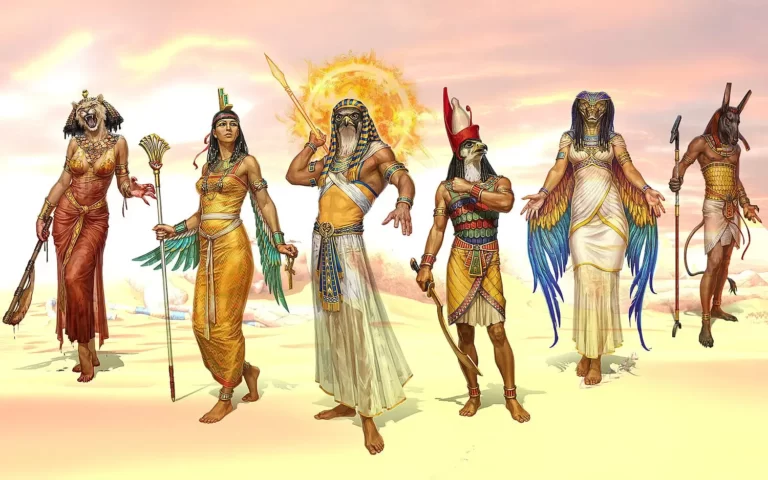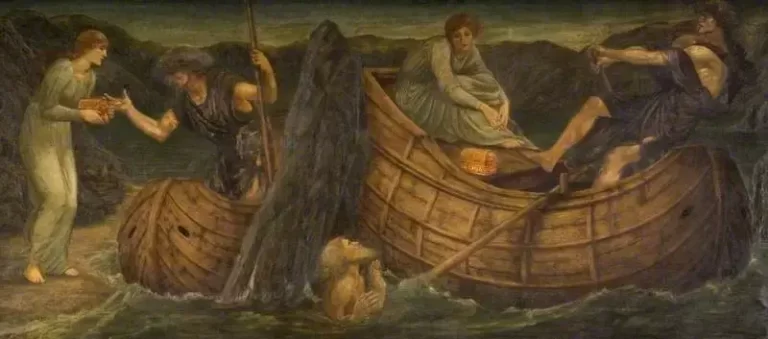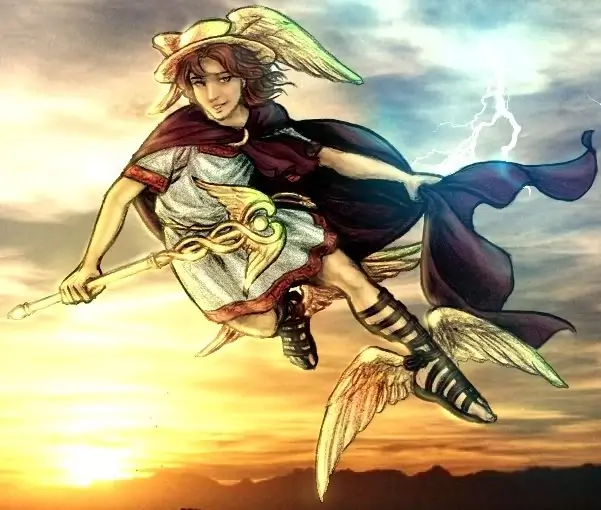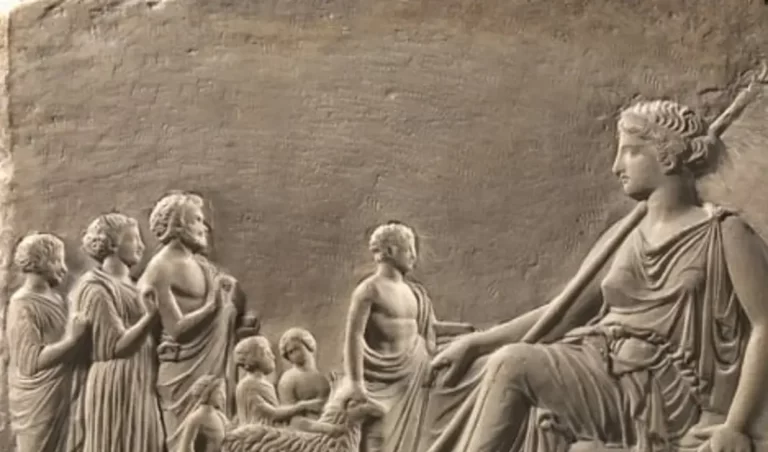Cernunnos – god of nature, fertility, and the hunt
Cernunnos is a god from Celtic mythology who is often associated with nature, fertility, and the hunt. He is typically depicted as a horned or antlered figure, and he has been an important figure in the religious and spiritual traditions of many people throughout history. Cernunnos is one of the many gods and goddesses who make up the rich tapestry of Celtic mythology, and his influence can still be seen today in a variety of cultural traditions and spiritual practices.
Explanation of who Cernunnos is
Cernunnos is a god in Celtic mythology who is associated with nature, fertility, and the hunt. He is often depicted with antlers on his head and is sometimes referred to as the “Lord of the Animals” due to his close association with wildlife. While there is limited information about Cernunnos in ancient texts, he has become a popular figure in modern pagan and Wiccan traditions.
Cernunnos’ Importance in Celtic Mythology
Cernunnos is an important figure in Celtic mythology, particularly in Gaulish and Gallo-Roman religions. He is a god associated with nature, fertility, and the hunt, and is often depicted with antlers or horns, indicating his connection to the wild and to animals. While there is no single authoritative source on Cernunnos, his imagery and name have been found throughout the Celtic world, indicating his widespread significance in the culture.
Cernunnos’ History and Origin
Cernunnos’ history and origin are shrouded in mystery, and not much is known about his early worship among the Celts. However, many scholars believe that Cernunnos may have originated as a deity of the continental Celts, particularly the Gauls, before being adopted by the insular Celts in Britain and Ireland.
Cernunnos’ earliest known depictions are found on ancient Gaulish and Gallo-Roman artifacts, such as the Pillar of the Boatmen in Paris, which dates back to the 1st century BCE. He is often depicted as a horned deity, sometimes with antlers like a deer, and is associated with nature, fertility, and the hunt.
Despite the scarcity of information about his early history, Cernunnos became an important figure in Celtic mythology and continues to be revered by modern Pagans and Neo-Druids.
Explanation of Cernunnos’ historical background
Unfortunately, there is little historical information available about the origin and history of Cernunnos, as the majority of what is known comes from interpretations of archaeological finds and depictions in art. Cernunnos is believed to have originated as a deity of the Celtic people, who lived in what is now Europe around 2,000 years ago. He is commonly associated with the Gaulish people, who lived in what is now France and parts of Western Europe. Cernunnos is believed to have been an important deity of the Celts, and evidence of his worship has been found across the Celtic world.
Explanation of Cernunnos’ Role in Celtic Religion
Cernunnos is considered a major deity in Celtic religion, associated with the natural world, fertility, and the hunt. He is often depicted as a horned god, with antlers or horns that represent his connection to the wild and the natural world. Cernunnos was believed to have the power to control the growth of crops and the fertility of animals, making him an important figure for agricultural societies.
Cernunnos was also associated with the hunt and was believed to have the power to control the abundance of game animals. As such, he was often depicted with hunting weapons such as a bow and arrows or a spear. In addition to his association with nature and the hunt, Cernunnos was also believed to have had some connection to the afterlife and the underworld.
Cernunnos was widely worshipped throughout the Celtic world, and evidence of his worship has been found in Gaul, Britain, and other parts of Europe. He was often depicted in artwork and carvings, and many of these images have survived to the present day.
Cernunnos’ Characteristics and Traits
Cernunnos is often depicted as a powerful and imposing figure with antlers, which are symbolic of his connection to nature and the wilderness. He is often shown in a seated position, holding or surrounded by various symbols of fertility, such as animals, fruit, and grains. He is associated with the natural world, particularly the forest and its inhabitants, and is seen as a protector of animals and a symbol of the cycle of life and death. Cernunnos is also associated with the hunt and is believed to have the ability to control the animals he pursues. His strong connection to nature and the cycles of life and death make him a symbol of fertility, abundance, and renewal.
Overview of Cernunnos’ Image and Appearance
Cernunnos is commonly depicted in Celtic art as a man with the antlers of a stag, often seated in a cross-legged position and holding or surrounded by various symbols of nature, such as animals, plants, and sometimes torcs or other Celtic jewelry. He is sometimes shown with a horned or bearded human face and other times with the head of a bull or ram. Overall, his appearance reflects his association with nature, animals, and the hunt.
Discussion of Cernunnos’ personality and temperament
As a god of nature and fertility, Cernunnos is often depicted as a benevolent and generous figure. He is associated with the abundance of the earth and the cycles of life and death. Cernunnos is also seen as a god of the hunt, which may give him a more fierce and primal aspect. In some depictions, he is shown with antlers, a symbol of his connection to the natural world and the animal kingdom. Overall, Cernunnos is often portrayed as a complex and multifaceted deity, embodying both the gentle and wild aspects of nature.
Cernunnos’ connection to nature, fertility, and the hunt
Cernunnos is known for his association with nature, fertility, and the hunt, which are all interrelated aspects of his character. As the god of nature, Cernunnos is seen as the embodiment of the natural world and is often depicted with antlers, which symbolize his connection to the forest and its animals.
Cernunnos is also associated with fertility, as he is believed to have the power to bring abundance and prosperity to the land. This is reflected in his image as a horned god, which represents the life-giving power of the natural world.
Finally, Cernunnos is closely connected to the hunt, which was an important activity for the Celtic people. He is often depicted holding a torque, which is a symbol of power and authority, and a horned serpent, which represents the cycle of life, death, and rebirth. The hunt was seen as a sacred activity, and Cernunnos was believed to guide and protect the hunters, ensuring their success and safety in the woods.
Cernunnos’ Worship and Rituals
Due to the lack of written records from the Celtic era, much of what is known about Cernunnos and his worship comes from archaeological evidence, such as depictions of him on carvings and statues, as well as from later written accounts by Roman historians and Christian writers.
It is believed that Cernunnos was worshiped in sacred groves and forests, and that animal sacrifice may have been a part of his worship, particularly concerning the hunt. The worship of Cernunnos was likely closely connected to the cycles of nature, with rituals performed during the changing of the seasons, such as at the solstices and equinoxes.
In modern times, there has been a resurgence of interest in Celtic paganism and the worship of Cernunnos, with some practicing neo-pagans incorporating him into their religious practices. However, it should be noted that modern practices may differ significantly from historical worship, and that much of what is known about ancient Celtic religion and worship is based on speculation and interpretation.
how Cernunnos was worshipped in ancient times
There is limited information available on how Cernunnos was worshipped in ancient times, as much of Celtic religious practices were transmitted orally and did not leave written records. However, scholars believe that Cernunnos was likely worshipped through various rituals, offerings, and sacrifices.
Some evidence suggests that Cernunnos was associated with animal sacrifice, and it is possible that he was worshipped through such rituals. In addition, it is believed that the Celts may have made offerings to Cernunnos in sacred groves or natural places, as he was associated with nature and the wilderness.
Cernunnos may have also been invoked in hunting rituals, as he was believed to have power over the hunt and the animals of the forest. It is possible that hunters would have made offerings or prayers to him before embarking on a hunt or after a successful hunt.
Overall, the details of Cernunnos’ worship and rituals remain somewhat mysterious, but it is clear that he was an important figure in Celtic religion and likely played a significant role in the religious practices of the Celts.
the different rituals and practices associated with Cernunnos
One of the main ways in which Cernunnos was likely worshipped was through offerings, such as food, drink, and other items. These offerings were often left at sacred sites, such as in groves or at natural landmarks like rivers or hills, which were believed to be particularly sacred to Cernunnos. These offerings were seen as a way of appeasing the god and seeking his favor and protection.
In addition to offerings, it is thought that Cernunnos was also likely worshipped through rituals and ceremonies, although the specifics of these are not well known. It is possible that these rituals involved dancing, chanting, and other forms of communal worship.
Some modern practitioners of pagan and neopagan religions have also incorporated Cernunnos into their practices, often associating him with the cycles of nature and the changing seasons. They may also perform rituals and ceremonies that involve offerings and other forms of devotion to the god.
Conclusion
As we conclude our discussion on Cernunnos, the god of nature, fertility, and the hunt, we can see how he played a significant role in Celtic mythology and religion. His image and appearance, as well as his personality and temperament, were highly respected and revered by the Celts. His connection to nature, fertility, and the hunt made him an important deity for the Celts, who relied on the land and its resources for survival. Although the worship of Cernunnos declined with the spread of Christianity, his legacy and influence can still be seen in contemporary pagan and neopagan spirituality.






